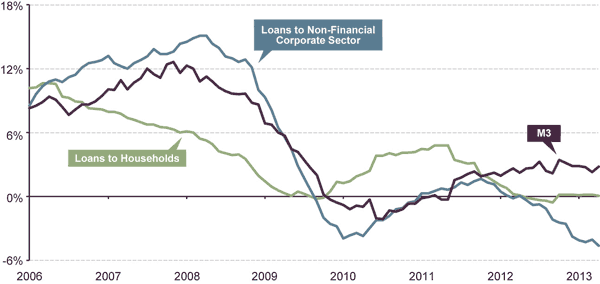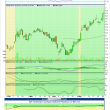by Scott Minerd, CIO, Guggenheim Partners
Europe has had one of the nastiest winters on record, but hopes are high for a better summer. This is analogous to the economic outlook for the region. Brussels has announced a six billion euro program to reduce unemployment called a "New Deal" for Europe, echoing the language used by Roosevelt in the U.S. in the 1930s. This comes with a formal relaxation of the European Union’s (EU) austerity targets in exchange for labor reforms across the continent.
The focus of most of the policy reforms is on the periphery, but France aims to create half a million new jobs over the next three years, and Germany is preparing to relax immigration and provide training to reduce the labor shortage in high tech engineering jobs. The EU is also seeking to improve infrastructure with a program that emulates Build America Bonds called "Project Bonds." There is likely to be an announcement of a program in which the European Central Bank will securitize assets away from banks’ balance sheets by the end of the summer. Adding all of this up, it appears to be "Morning in a New Europe,” bringing about a number of attractive investment opportunities.
Economic Data Releases
Strong Consumer Confidence and Housing Data Lift U.S. Outlook
- The Conference Board’s consumer confidence index rose to 76.2 in May, the highest level since February 2008.
- The S&P/Case-Shiller 20 city home price index gained 10.9% from March 2012 to March 2013, the best yearly increase since April 2006.
- The FHFA house price index was up 1.3% in March, the largest one-month gain on record.
- Existing home sales rose 0.6% in April to an annualized rate of 4.97 million, the highest rate since November 2009.
- New home sales increased 2.3% in April to 454,000, a three-month high.
- Initial jobless claims fell to 340,000 for the week ended May 18th, after a jump to 363,000 the previous week.
- Durable goods orders rose a more-than-expected 3.3% in April, with non-defense capital goods orders (excluding aircraft) rising for a second consecutive month.
European PMIs and Confidence Improve, Disappointing Manufacturing PMI in China
- Eurozone consumer confidence rose for a sixth straight month in May to -21.9.
- The eurozone composite PMI climbed to 47.7 in May, the second consecutive month of slowing contraction.
- Germany’s first quarter GDP was unchanged in the second estimate of 0.1%. Private consumption growth of 0.8% was offset by falling investment and government spending.
- The German IFO business climate indicator reversed two months of falling confidence, rising to 105.7 in May, while GfK consumer confidence rose to its highest level since September 2007 in the June survey.
- The German CPI rose to 1.7% in May, after 1.1% inflation in April.
- German unemployment increased by 21,000 in May, the largest monthly increase in four years. The unemployment rate held at 6.9%.
- France’s May manufacturing PMI reached the highest level in over a year, but remained well into contraction at 45.5. Meanwhile, German manufacturing activity had a third straight month of contraction.
- Business confidence in France increased to a one-year high in May, while consumer confidence unexpectedly fell, reaching an all-time low of 79.
- U.K. GDP grew 0.3% in the first quarter, with consumption growth of just 0.1%.
- U.K. retail sales excluding auto fuel fell 1.4% in April, the largest drop in nearly two years.
- The HSBC flash manufacturing PMI for China dipped into contraction in May for the first time since October 2012.
Chart of the Week
A Broken Monetary Policy Transmission Mechanism
The credit environment in the eurozone’s real economy continues to deteriorate, despite a pickup in money supply growth. M3 money supply rose 2.8% year-over-year in April, while bank lending to households remained flat, and loans to the non-financial corporate sector fell 4.6% from a year ago. The divergence reflects the ongoing breakdown of the transmission mechanism for monetary policy, indicating an increasing need for European policymakers to implement more specific measures to address the credit constraints in the private sector.

Source: European Central Bank, Haver Analytics, Guggenheim Investments. Data as of 4/30/2013.
This article is distributed for informational purposes only and should not be considered as investing advice or a recommendation of any particular security, strategy or investment product. This article contains opinions of the author but not necessarily those of Guggenheim Partners or its subsidiaries. The author’s opinions are subject to change without notice. Forward looking statements, estimates, and certain information contained herein are based upon proprietary and non-proprietary research and other sources. Information contained herein has been obtained from sources believed to be reliable, but are not assured as to accuracy. No part of this article may be reproduced in any form, or referred to in any other publication, without express written permission of Guggenheim Partners, LLC. ©2013, Guggenheim Partners. Past performance is not indicative of future results. There is neither representation nor warranty as to the current accuracy of, nor liability for, decisions based on such information.
Copyright © Guggenheim Partners













